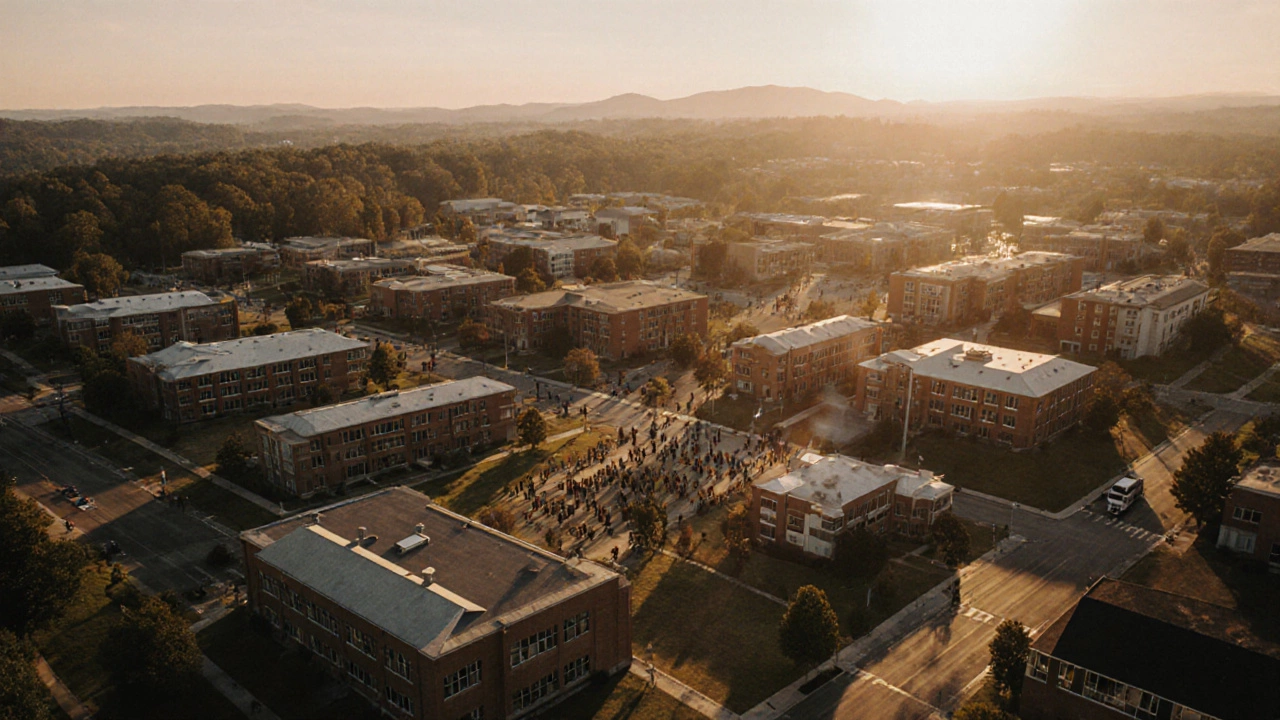Fairfax County Schools: What You Need to Know About Public Education in Virginia
When you think about Fairfax County Schools, a large public school district serving over 180,000 students in Northern Virginia. Also known as FCPS, it's one of the biggest and most diverse school systems in the United States, with students speaking more than 170 languages at home. This isn’t just another school district—it’s a system that reflects the changing face of American education, with high academic standards, intense competition for top colleges, and deep community involvement.
Fairfax County Schools operates under the same state rules as other Virginia districts, but its size and funding give it unique advantages and challenges. Unlike smaller districts, FCPS has the resources to offer advanced placement courses in nearly every high school, specialized programs for gifted students, and full-time counselors in every building. But it also faces pressure: parents expect top-tier results, and students often juggle heavy workloads just to stay competitive. The district’s graduation rate hovers around 92%, and its students consistently score above state averages on standardized tests. Yet, behind those numbers are real stories—families navigating crowded classrooms, teachers stretching budgets, and kids trying to find their place in a system that moves fast.
What sets Fairfax apart isn’t just its test scores. It’s how deeply connected it is to the broader US education system, a network of public, private, and charter schools that vary wildly by state and district. While some states rely heavily on standardized testing, Virginia uses a mix of assessments and local benchmarks. FCPS aligns with state standards but adds its own layers—like mandatory internships for high schoolers and robust ESL support. It also mirrors national trends: rising mental health concerns, debates over curriculum content, and growing demand for special education services. The district’s approach to inclusion, gifted programs, and technology use often becomes a model others watch.
And then there’s the money. Fairfax County has one of the highest per-pupil spending rates in Virginia, thanks to its strong tax base. But that doesn’t mean everything is easy. Schools still struggle with aging buildings, teacher shortages, and equity gaps between neighborhoods. Some families move here specifically for the schools, while others feel overwhelmed by the pressure. It’s a place where a 3.8 GPA might not be enough to get into the top colleges, and where parents are constantly comparing AP course offerings between high schools.
What you’ll find in the posts below are real insights into how systems like Fairfax County Schools fit into the bigger picture of American education. You’ll see how A-Levels compare to U.S. high school diplomas, why some students thrive in remote learning while others don’t, and how learning disabilities are identified and supported in large districts. You’ll get clear facts about scholarships, GPA expectations, and what colleges really look for. There’s no fluff—just what matters if you’re a parent, student, or teacher trying to make sense of a complex system. Whether you’re moving to Northern Virginia or just trying to understand how top U.S. schools work, these posts give you the tools to navigate it.

What Is the Largest School System in Virginia?
- by Eliza Fairweather
- on 18 Nov 2025
Fairfax County Public Schools is the largest school system in Virginia, serving over 188,000 students across 230 schools. It offers unmatched diversity, advanced programs, and strong academic outcomes.
